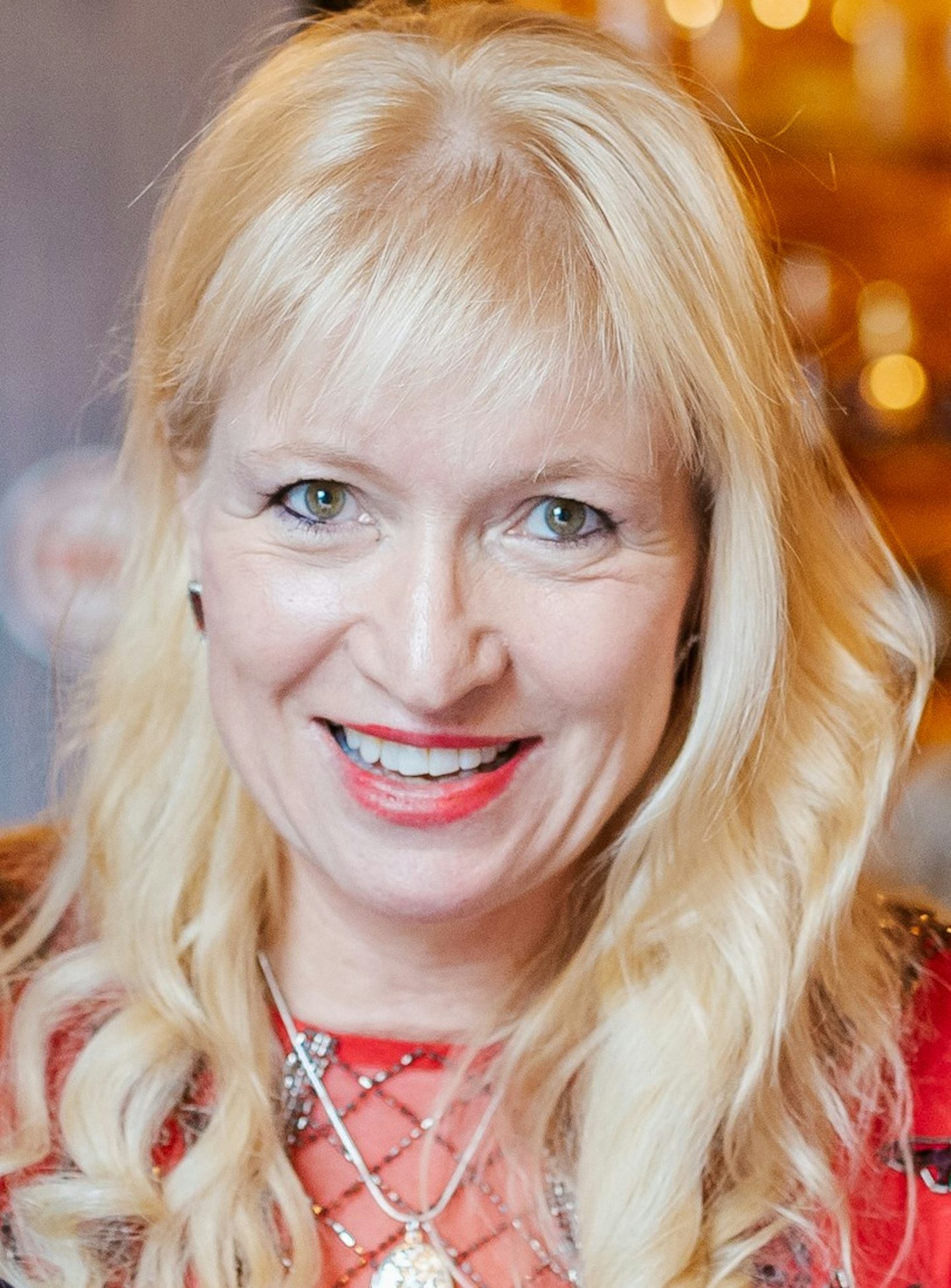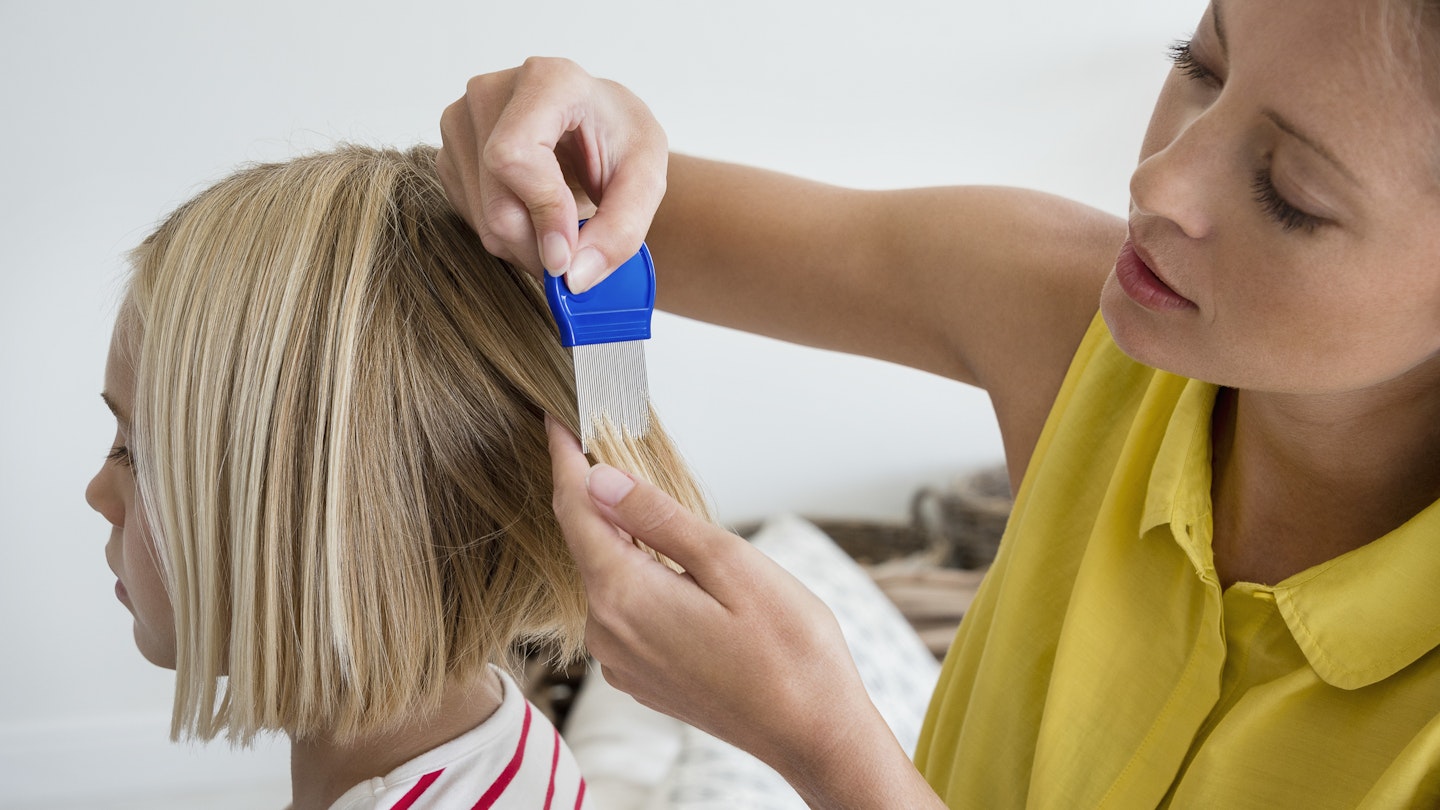Head lice are every parents’ nightmare – they're tiny insects that live in the hair and are super common in toddlers and children.
Don't worry though, because they're pretty harmless. That said, head lice will continue to live on your tots’ scalp for a long time if untreated, so it’s a good idea to learn how to treat them.
What are head lice?
"Head lice are tiny insects that live in the hair," says Dr Deborah Lee, from Dr Fox Online Pharmacy. "They are about 3mm in length – about the same size as a sesame seed - and dark grey in colour, so can be difficult to spot. They feed off blood from the scalp and are easier to see when they are full of blood.
"When they bite, they inject saliva. The scalp feels itchy if there is a local allergic reaction to the saliva. It might take time for the allergic reaction to develop, so a person can have lice for some time without knowing it or having any symptoms.
"Head lice lay whitish oval eggs called nits, and these are easier to spot. They are yellowish-white in colour and stick on the hair shaft, close to the scalp. You might find them anywhere but typically on the back of the neck or behind the ears. The eggs hatch every six to nine days.
"In one 2022 review by BMW, 19 per cent of school-aged children had head lice – so they are very common. Having head lice does not mean a person is dirty or comes from a dirty home. There is no reason to feel ashamed or embarrassed about having head lice."
Treatments for head lice
Dr Lee continues: "The most effective head lice treatments contain the following active ingredients:
-
Dimeticone - this is a type of silicone oil that coats the lice, making them immobile, and prevents them from being able to excrete water. This kills them. In a 2019 study by BMC, 4 per cent dimeticone was more effective than permethrin in killing head lice.
-
Actividiol - this disrupts the waxy covering of the head louse insect, again impairing its water regulation mechanism.
-
Isononyl Isononanoate - this is another chemical that disrupts the water regulation of the head louse and also helps to detach the egg from the hair shaft.
-
Malathion – an insecticide which kills head lice.
"Ask the pharmacist for advice about head lice treatments which are sold under different brand names, for example, Hedrin. These can be purchased without a prescription."
Head lice treatments are available in the following formulations -
-
Dimeticone four per cent lotion or lotion spray applied to the scalp and left in for eight hours – most people do this overnight and wash it out in the morning.
-
Dimeticone four per cent spray gel applied to the scalp and left in for 15 minutes.
-
A mineral oil and dimeticone spray can be applied to the scalp and left in for 15 minutes.
-
Isopropyl myristate and cyclomethicone solution which are applied to the scalp and left in for 5-10 minutes.
"Some treatments need to be repeated after seven days to ensure you kill any newly hatched lice," says Dr Lee. "The hair should be wet, and combed with a special nit comb, two to three days after treatment and again seven days later. Nit combs can be purchased in most pharmacies/drug stores.
"Always check the pack or leaflet to check if a product is suitable for you, particularly if you are pregnant, breastfeeding, or your child has headlice but is under two years old."
Note that the NHS does not recommend -
-
Head lice treatments containing permethrin
-
Head lice repellents
-
Electric nit hair combing
-
Plant oil treatments such as tea tree, eucalyptus or lavender oil
Head lice symptoms
Anyone can get head lice, but it is most common in children aged from three to 11. Symptoms include:
-
Feeling something is crawling in your hair
-
An itchy scalp
-
Sores on your scalp, often from scratching, which can be weeping due to a secondary infection
-
Disrupted sleep due to itching, especially as head lice are most active at night
-
Sometimes the glands (lymph nodes) in the neck can be slightly swollen
How to remove lice from hair permanently
"There are a lot of misconceptions about head lice," continues Dr Lee. "Head lice cannot fly, jump, or hop. Those with persistent or recurrent symptoms are often those who have not followed the treatment instructions carefully enough. Start by wet combing the hair on days one, five, nine and 13, to persistently remove the newly hatched eggs. Wash, shampoo, and condition the hair before combing the wet hair right from the scalp to the ends. Leave the conditioner in the hair to do the nit combing, and then rinse it out as usual.
"Section the hair carefully so as not to miss any of the hair out and comb through it, section by section. Use a proper plastic – not metal – nit comb. Wipe the comb on a piece of kitchen towel after each stroke with the comb, and then rinse the comb before using it again, to discard any lice or nits. Doing this properly may take 15 minutes depending on the length and type of hair.
"If one person in a household has head lice, everyone should have their scalps checked for nits by detection combing. Everyone who lives in the household should be treated, whether or not head lice were found. When the household is being treated, everyone should be treated on the same day. This doesn’t mean anyone your child sits next to at school, but does mean anyone who sleeps under the same roof. Children do not need to be kept away from school due to nits.
"You should keep combing every few days until three combing sessions have shown no lice or eggs. Get advice from a pharmacist and use the best product exactly as it says on the pack/leaflet. This might mean repeating the treatment in seven days. Tell your child not to share hairbrushes, hair bands, hats, caps, or hair elastics with anyone.
"If the scalp continues to be itchy it might not be due to head lice at all. Scalp eczema or psoriasis, for example, also causes itching, so your child should see their GP."
What do nit eggs look like?
Head lice lay whitish oval eggs called nits; they are yellowish-white in colour and stick on the hair shaft, close to the scalp.
Where do head lice come from?
"You can get head lice if you share hair products such as a brush or a comb with someone who has them, or if two heads are in close proximity for any length of time," explains Dr Lee. "But head lice cannot jump or fly from head to head."
Can nits jump?
"No, they can’t jump, hop or fly," advises Dr Lee.
How to check for lice?
"You should wear disposable gloves when checking the scalp/hair for head lice," Dr Lee explains.
"Check the hair by parting the hair and taking a good look. Typical areas to find them are behind the ears, in the nape of the neck, and at the crown of the head. You might see tiny lice the size of a poppy seed crawling near the scalp. More commonly you will see the small, oval eggs, known as nits, attached to the shaft of the hair, approximately a quarter of an inch from the scalp. You might see small red patches where the skin has been scratched and is scabbed or bleeding. Dispose of the gloves or wash your hands thoroughly after doing this."
Do nits like clean hair?
"Head lice don't care if hair is clean or dirty," says Dr Lee. "However, using conditioner can help as they find it more difficult to attach the eggs to the hair shaft."
How can you tell if you have lice?
"If you or your child suddenly develop an itchy scalp it's always important to get your scalps checked for head lice," Dr Lee says. "Also, if you have been in contact with anyone who has recently been diagnosed/treated for head lice."
Meet the expert:

Having worked for many years in the NHS, mostly as Lead Clinician within an integrated Community Sexual Health Service, Dr Deborah Lee now works as a health and medical writer, with an emphasis on women's health, including medical content for Dr Fox pharmacy. She has published several books and remains passionate about all aspects of medicine and sexual health. After completing her Medical Degree at University of Southampton Medical School in 1986, Dr Lee trained as a GP and after a number of years specialised in Sexual & Reproductive Health (S&RH).
Mummy to a little girl, Adejumoke Ilori is Commercial Content Writer for Mother&Baby. With a BA hon in Creative Writing, she has worked for digital platforms, where she has empowered women from the inside and out, by sharing real life stories based on relationships, loving yourself and mummyhood.
